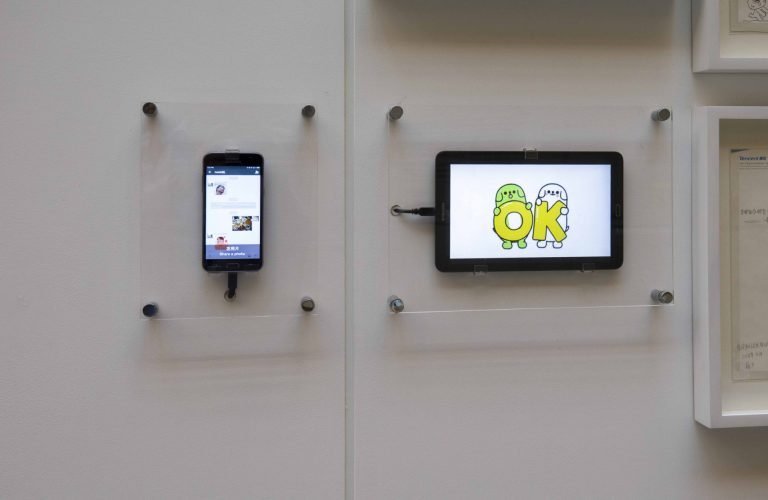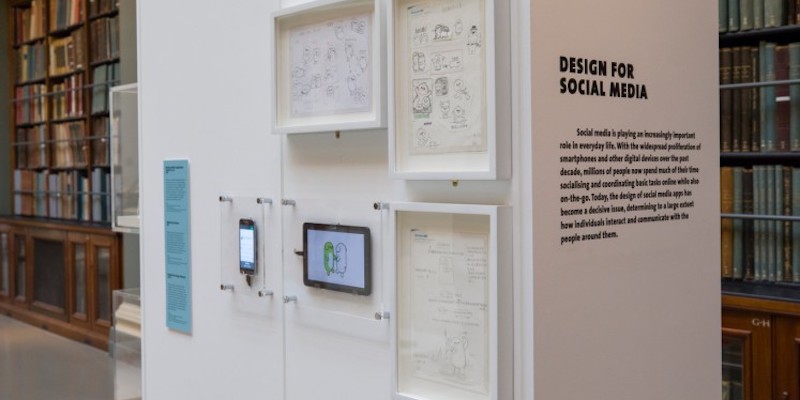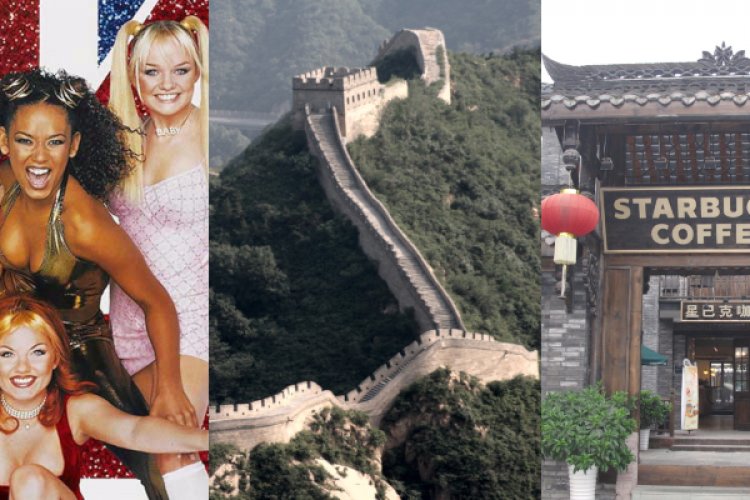Throwback Thursday: As WeChat Turns 10, We Remember the Time It Became a Literal Work of Art
Throwback Thursday takes a look back into Beijing's past, using our 12-year-strong blog archives as the source for a glance at the weird and wonderful stories of Beijing's days gone by.
On a cold winter morning 10 years ago today, Tencent unveiled its newest project, a humble little messaging app called Weixin. Though the company was already firmly planted in the social media sphere with its QQ instant messenger app and Qzone social network, the idea behind Weixin was to disrupt the telecommunications ecosystem by creating a service that wasn’t constrained to a single mobile phone model or service provider. Simply put, with this new technology, users would have more freedom to send text messages, short voice memos, and photos to their friends and family. As folks are wont to say, however, "they grow up so fast," and 10 years on, Weixin – or WeChat as it’s known to the English-speaking community – has become an undeniable and altogether ubiquitous part of our everyday life.
Whereas Facebook is often said to dominate the global social media landscape with its 2.7 billion monthly active users, in terms of design, functionality, and rate of adoption, WeChat stands in a league of its own. That’s why in 2017, WeChat became the first social media app to be entered into a museum’s permanent collection when it was acquired by London’s Victoria & Albert Museum (V&A).
In an interview with our content partner TechNode from Jan 22, 2018, V&A’s senior curator of Design and Digital, Corinna Gardner, explained that “WeChat was a forerunner in design innovation in non-textual communication,” adding, “With its early adoption and an advanced society which is mobile first, WeChat became part of our overall understanding of the use of social media. In this respect, WeChat is singular.”

Brendan Cormier, lead curator of 20th and 21st-century design for V&A’s satellite gallery at the Sea World Culture and Arts Center in Shekou, Shenzhen echoed that sentiment. “It’s an innovator in what we take for granted … WeChat fundamentally changed the way people do things and even its developers at Tencent were amazed at their own power to change regular bodily motions,” such as the way folks lift their phone to their mouth to record a voice message.
WeChat’s innovation and impact on not only social media apps but also operating systems in general, cannot be overstated. WeChat was the first to integrate voice messaging, stickers, and its now-iconic app-within-an-app system – a feature that the V&A team found uniquely compelling. In an article titled "How We Collected WeChat" on the V&A blog, Cormier writes, "Of particular interest for us was WeChat’s ‘apps within an app’ design. A conventional smartphone user outside of China would typically download several apps and sign in to several services to accomplish different tasks. A rideshare app here, a food delivery app there, another one for online banking, and so on. WeChat builds all these services into its user interface so that you never have to leave the app to perform multiple tasks." He goes on to call it the "Swiss army knife of apps."
Likewise, Apple is no stranger to lifting features from WeChat, such as its latest round of iOS updates, which included the ability to reply to – or “quote” in WeChat vernacular – a specific message in a thread. Unfortunately, however, given that WeChat is relatively unknown outside of China even today, its influence often goes unappreciated. In fact, at the time of the museum's acquisition, Cormier acknowledged that “because it was WeChat we got a lot of shrugs as people don’t know it.” Incidentally, it would be another two years before the V&A Museum got an official WeChat account itself.

At any rate, there’s little doubt that ever since the digital revolution in the earlier part of this century, technological innovation has come around at such a rapid pace that it often becomes irrevocably entrenched in society before we even have a chance to survey its impact. "Insidious" may be too nefarious a word as we would like to believe that the developers of these programs don’t set out to forever change the nature of society and human interaction – at least not negatively. Nevertheless, with a couple more users here and a few updates there, over time, it becomes evident that life will never be what it was three, five, or – in this case – 10 years before. As such, it would require a much more comprehensive article to unpack the whole of the WeChat saga over the last decade. Suffice to say, that in just ten short years, WeChat went from a simple messaging service to a literal work of art installed alongside some of history’s greatest sculptures, paintings, and wood carvings.
And with that, everyone here at the Beijinger would like to wish WeChat a very happy birthday, and we’re excited to see what the next 10 years have in store. Until then, you can check out this blog from May 2013, when we launched our official account on the platform. Oh, and of course, you should totally follow us at WeChat ID: theBeijinger!
Images: Victoria and Albert Museum, TechNode







